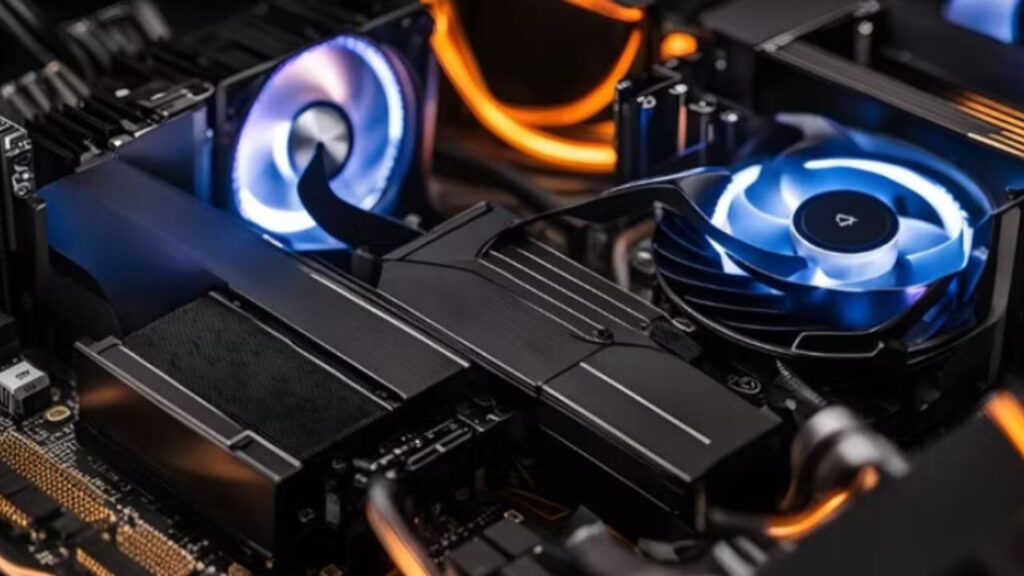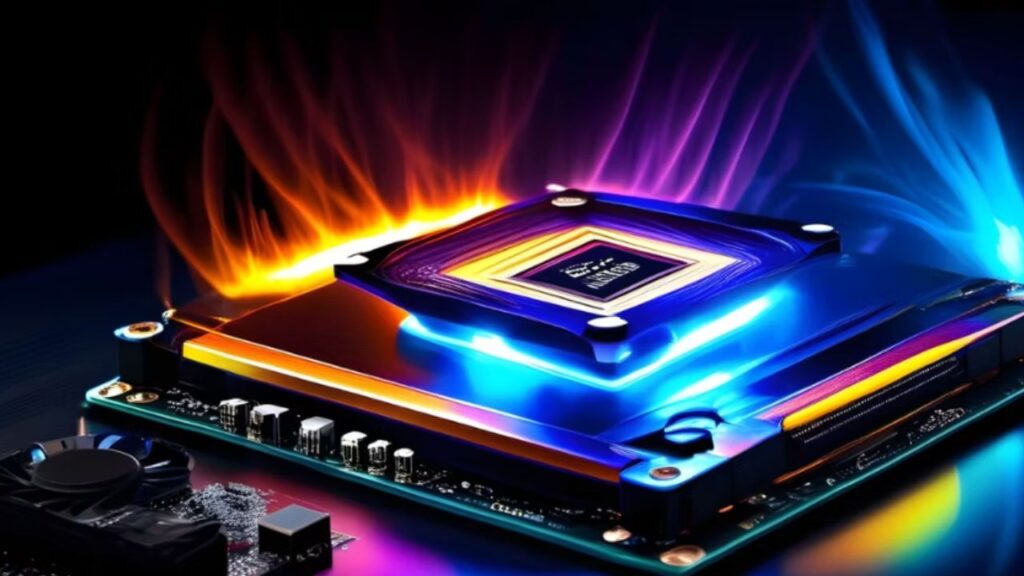Gaming has come a long way in recent years, and modern titles often demand top-notch hardware to provide a smooth and immersive experience.
If you find your gaming rig struggling to keep up with the latest releases, there’s a solution that doesn’t involve a costly hardware upgrade: overclocking your GPU.
Overclocking can help you squeeze out extra performance from your graphics card and enjoy higher frame rates and better graphics quality.
In order to safely overclock a GPU, increase the clock rate by 10 MHz increments and then evaluate system performance and stability. If you experience problems with your system, lower your overclock by 10 or 20 MHz and try again.
In this article, we’ll walk you through the process of overclocking your GPU to achieve better gaming performance.
What Is GPU Overclocking?

Operating your graphics card at clock speeds faster than its factory specifications is known as GPU overclocking. The manufacturer usually establishes conservative clock speeds for GPUs.
By increasing the clock speed, overclocking makes it possible for the GPU to operate more quickly, improving its capacity for graphics processing.
For creative workers, this performance gain might lead to faster rendering and greater frame rates during gaming sessions.
The fundamental idea behind overclocking is that your graphics card’s preset clock settings frequently leave some unrealized frequency potential.
By carefully tweaking parameters particular to your system, you may unlock this potential and make it run better than the manufacturer’s general default clocks.
Before You Begin: Safety First
Before diving into overclocking, it’s crucial to understand that there are some risks involved. Overclocking can lead to higher temperatures, increased power consumption, and, in rare cases, instability or even damage to your GPU if not done correctly.
Therefore, ensure to follow these safety precautions:
- Check Your Warranty: Overclocking your GPU may void the manufacturer’s warranty, so be aware of the potential consequences.
- Monitor Temperatures: Keep an eye on your GPU’s temperature while overclocking. Use software like MSI Afterburner or EVGA Precision X1 to track temperature and other crucial metrics.
- Incremental Changes: Start with small adjustments and gradually increase clock speeds to avoid overheating or crashes.
- Stress Testing: After each overclock, stress tests your GPU to ensure it remains stable under load.
- Backup Your Data: Back up your important data just in case something goes wrong.
Now, let’s dive into the overclocking process.
Step 1: Choose the Right Tools
To overclock your GPU, you’ll need the following tools:
- A capable graphics card: Not all GPUs are equal in terms of overclocking potential. High-end cards generally offer more headroom for overclocking.
- Reliable overclocking software: There are various software options available, such as MSI Afterburner, EVGA Precision X1, and ASUS GPU Tweak. Download and install your preferred tool.
Step 2: Understand GPU Clocks
Before you start tweaking settings, it’s essential to understand the two primary GPU clock settings:
- Core Clock: This determines the speed of the GPU’s processor cores. Increasing it results in better gaming performance.
- Memory Clock: This dictates the speed of your GPU’s video memory. Boosting this can also improve performance, especially in games with high-resolution textures.
Step 3: Incremental Adjustments
Start conservatively by making small, incremental changes to your GPU’s clock settings. Here’s how to proceed:
- Open your overclocking software.
- Increase the core clock by a small amount, such as 10-20 MHz.
- Apply the changes and test your GPU’s stability. Run a demanding game or a benchmark tool.
- If your system remains stable, repeat the process, gradually increasing the clock speed.
- Monitor temperature and usage while testing.
Step 4: Stress Testing
To ensure your GPU can handle the new clock speeds without crashing or overheating, perform stress tests. Tools like FurMark, 3DMark, or Heaven Benchmark can help evaluate stability under heavy loads.
- Run the stress test for at least 15-20 minutes.
- If the GPU crashes, artifacts appear on the screen, or temperatures spike excessively, you’ve pushed it too far. Lower your clock speeds.
Step 5: Memory Clock Tweaking
Just like the core clock, incrementally increase the memory clock speed and stress test it. Memory clock adjustments often yield noticeable performance improvements in games with high-resolution textures.
Step 6: Fan Speed and Temperature Management
As you overclock, your GPU will generate more heat. Make sure your system has sufficient cooling. You can manually adjust your GPU’s fan speed to help keep temperatures in check.
Step 7: Save Profiles
Most overclocking software allows you to save profiles. This is handy for switching between different clock settings for gaming and regular use. In the unlikely event that you overtax the GPU and have to go back to earlier configurations, it’s also a great backup.
Conclusion:
Overclocking your GPU can provide a significant boost in gaming performance without breaking the bank on a new graphics card. However, it should be done with caution, and always remember to monitor your temperatures and stress test your GPU to ensure stability.
Your gaming experience may be revitalized by properly overclocking your GPU, which will let you experience smoother frame rates and better visuals in your preferred titles. So go ahead and use your GPU’s capabilities to improve gaming performance!
FAQ:
1. What is GPU overclocking, and why would I want to do it?
GPU overclocking involves increasing the clock speeds of your graphics card, allowing it to perform at a faster rate than the manufacturer’s default settings. Overclocking can lead to higher frame rates in games and improved graphics performance, making it an appealing option for gamers and creative professionals.
2. Can I overclock any graphics card?
In most cases, yes, you can overclock most modern graphics cards. However, the extent to which you can overclock may vary depending on the specific GPU model and its cooling capabilities.
3. What tools do I need to overclock my GPU?
To overclock your GPU, you’ll need:
- A compatible graphics card.
- Overclocking software: Popular options include MSI Afterburner, EVGA Precision X1, and ASUS GPU Tweak.
- A stable and well-ventilated PC setup.
4. Is GPU overclocking safe?
GPU overclocking can be safe if done responsibly. However, it does come with risks, such as overheating or instability. To minimize these risks, it’s essential to monitor your GPU’s temperature, use incremental adjustments, and run stress tests.
5. What are the primary settings to adjust when overclocking a GPU?
The two primary settings to adjust when overclocking a GPU are:
- Core Clock: This determines the speed of the GPU’s processor cores.
- Memory Clock: This controls the speed of the video memory.
Incrementally increase these settings to find the optimal balance between performance and stability.
6. How do I safely overclock my GPU?
Here are some steps to safely overclock your GPU:
- Start with small adjustments (e.g., 10-20 MHz) and test for stability and temperature.
- Monitor your GPU’s temperature using monitoring software to avoid overheating.
- Gradually increase clock speeds and run stress tests (e.g., FurMark or 3DMark) to ensure stability.
- Avoid excessively high voltage settings, which can lead to damage.
- Back up your data before overclocking in case anything goes wrong.
7. What is the purpose of stress testing in GPU overclocking?
Stress testing is crucial in GPU overclocking to evaluate the card’s stability under heavy loads. It helps ensure that your overclocked settings won’t lead to crashes, artifacts, or overheating during extended gaming or rendering sessions.
8. What should I do if my GPU becomes unstable or overheats during overclocking?
If your GPU becomes unstable or overheats, reduce the clock speeds back to the last known stable settings. This will help maintain stability and prevent potential damage.
9. Can I revert to the default settings if I’m not satisfied with the overclocked performance?
Yes, you can easily revert to the default settings by resetting the overclocking software or using saved profiles.
10. What are the potential benefits of overclocking a GPU?
Without the need for an expensive hardware replacement, the advantages of GPU overclocking include:
- Higher frame rates in games.
- Quicker rendering in creative apps.
- An overall improvement in graphics performance.

